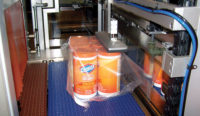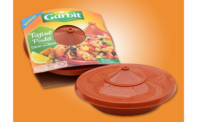With the breadth of films available for flexible packaging, printers and converters are reaching new heights in both printing quality and capabilities. Considering that aesthetic appeal and shelf impact are among the top reasons consumers choose flexible packaging1, the industry’s continued innovation to up its printing game isn’t simply a nice-to-have — it’s necessary.
Whether film will have advanced graphics printed on every last inch, keeps a clear window so consumers can see the product inside or is left completely transparent, one thing is certain: great printing begins with clear, bright and — for a better printing surface — flat film.
How does one achieve a clearer, brighter and flatter film? Here are four ways.
1. Specify Quality Ingredients
Like any recipe, a lot can be improved by simply using better ingredients. For printers and converters, you can start by asking your film manufacturer what they’re using and if there’s anything better on the market.
To achieve optimal clarity, for example, you can ask your film supplier to source prime-grade resins — not off grades. You can also blend high-clarity resins on the outside skins.
Films can be made brighter with superior pigment additives, such as premium-grade titanium, to lift the blue and white tones.
2. Use Cutting Edge Technology
Aesthetics aren’t limited to resins and additives. Clarity and brightness of film can also be enhanced mechanically, using different quenching and drying processes. This brings us to equipment.
Your film manufacturer’s equipment is a significant factor in the printability of your packaging. You can have the best designs out there, but if your film quality is inconsistent — if there are bumps and folds — you won’t be able to achieve the intended aesthetic effect in your packaging.
With the right machines—ones that include microprocessors and auto-gauging systems that correct imperfections—manufacturers have the ability to establish and control smaller gauge variances within the film. This level of consistency makes the film easier to work with and gives it a smoother printing surface. Without creases and bumps, ink distributes more evenly onto the film, leaving you with fewer film-related printing issues.
As an aside, smoother film is also stronger and runs through lines much more efficiently.
3. Plan the Process
Process varies according to the film, but it’s worth mentioning that how film is processed is a factor for printing. When you optimize that process, you are rewarded with better results.
For example, clarity in lamination films that are used with other substrates—such as polyester and oriented polypropylenes (OPP) — is very important. To enhance printing in these cases, the film should be treated to increase the dyne level, which will increase surface tension and adhesion of the ink to the film surface.
For converter-grade film, ideal printing has similar requirements. If your manufacturer is using non-laminated polyethylene film for bags, they still need to be treated to make them print-ready. If the film is laminated, the converter may choose to print on a surface and laminate it to protect the printing and integrity of the packaging.
4. Leverage the Benefits of Multilayer Film
Print-ready packaging isn’t created in a vacuum. There are always going to be other specifications to consider. If the application has anything to do with preservation, for example, safety will always come first.
This is where I will evangelize (again) about the benefits of multilayer films. With up to 11 possible layers, each with its own resins and additives, manufacturers can combine all of the specifications they need—clarity, high gloss, strength, and seal—into one, high-quality film roll.
Manufacturers need not sacrifice one property for the sake of another, and customers gain 100 percent of the benefits of each resin. Monolayer films that use either one resin or one resin blend offer no such freedom — you can only blend properties and see what you get.
For example, if you need a print-ready film with a barrier, your supplier can create a barrier film with an adhesive layer that, under heat, adheres to itself as a sealant layer. This film would have a barrier layer in its core, and a top layer that can be sealed and provide a great surface for printing. (This simple design can also be translated into a plan for a range of barrier films, including moisture barriers, air barriers, oxygen barriers, off-gassing films for fresh produce, and films workable in freezer applications.)
Why else does multilayer make sense? Improving quality often means increasing spend. So if your goal is to enhance printability, as well as improve other properties, such as strength, resistance to moisture and air, and recyclability, there’s potential for costs to add up.
This is another reason using multilayer film is a good idea: you get the quality you want and the room for savings. Multilayer film allows you to use thin layers of top-tier material where it counts, and hide less expensive resins in other layers.
In summary, there are a lot of ways to achieve better, more printable film, and they all have to do with raising the quality of the film you use.
1 Source: FPA Consumer Insights and Perceptions of Flexible Packaging Report
Haremar
(905) 761-7552
www.haremar.com






